La Tour d’Argent, Paris | A Delicious Evolution, A-/B+
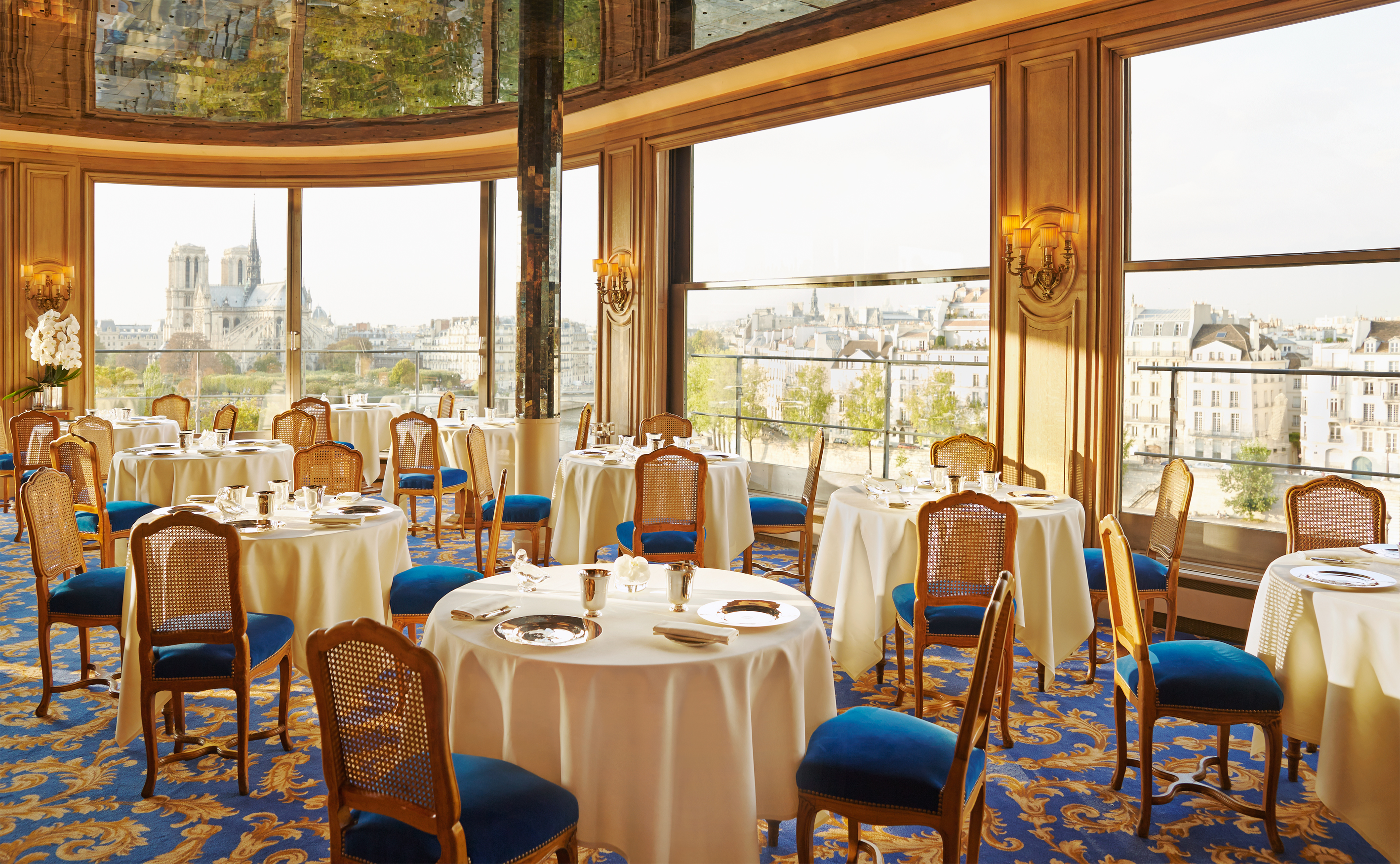
A room with a view
Reinventing a restaurant as famous as La Tour d’Argent was always going to be fraught with problems. Why? Well, if some clients might welcome the changes, perhaps even muttering under their breath, ‘Thank goodness, it’s about time!,’ others would denounce even the most reverent tinkering with the experience of a meal here as heresy. “They’ve absolutely ruined the place!” these sanctimonious self-appointed guardians of tradition would fume.
Unfortunately, in Paris, in 2016, the culture of the city is generally more in sympathy with a static status quo than innovation. In almost every realm, the past is reflexively judged to be more perfect than the present, which leads to the city’s bizarre officially sanctioned cantankerous determination to become a sort of genteel open-air museum. It also explains the existence of certain restaurants that are fussy, fretful gastronomic mausoleums that commemorate culinary traditions and a stuffy service style few people enjoy anymore, if they ever did.
But change had to come at La Tour d’Argent, which has been rather rudderless for a longtime. Since the death in 2006 of Claude Terrail, the natty gravely voiced boulevardier whose charm was the axis on which this perched table turned for over sixty years, this restaurant has been on an earnest but occasionally fumbling quest to renew its raison d’etre. The old formula of gallantly pandering to a self-satisfied international beau-monde that kept its reservation book full just wasn’t working anymore. In fact, the framed photos and autographs of the socialites, royals, and other celebrities who adored this place in its post-war hay day from 1950 to 1975 are decidedly momento mori now, and in any event, the general public is less impressed by such pedigrees in the age of the selfie and—woe is me– the Kardashians.
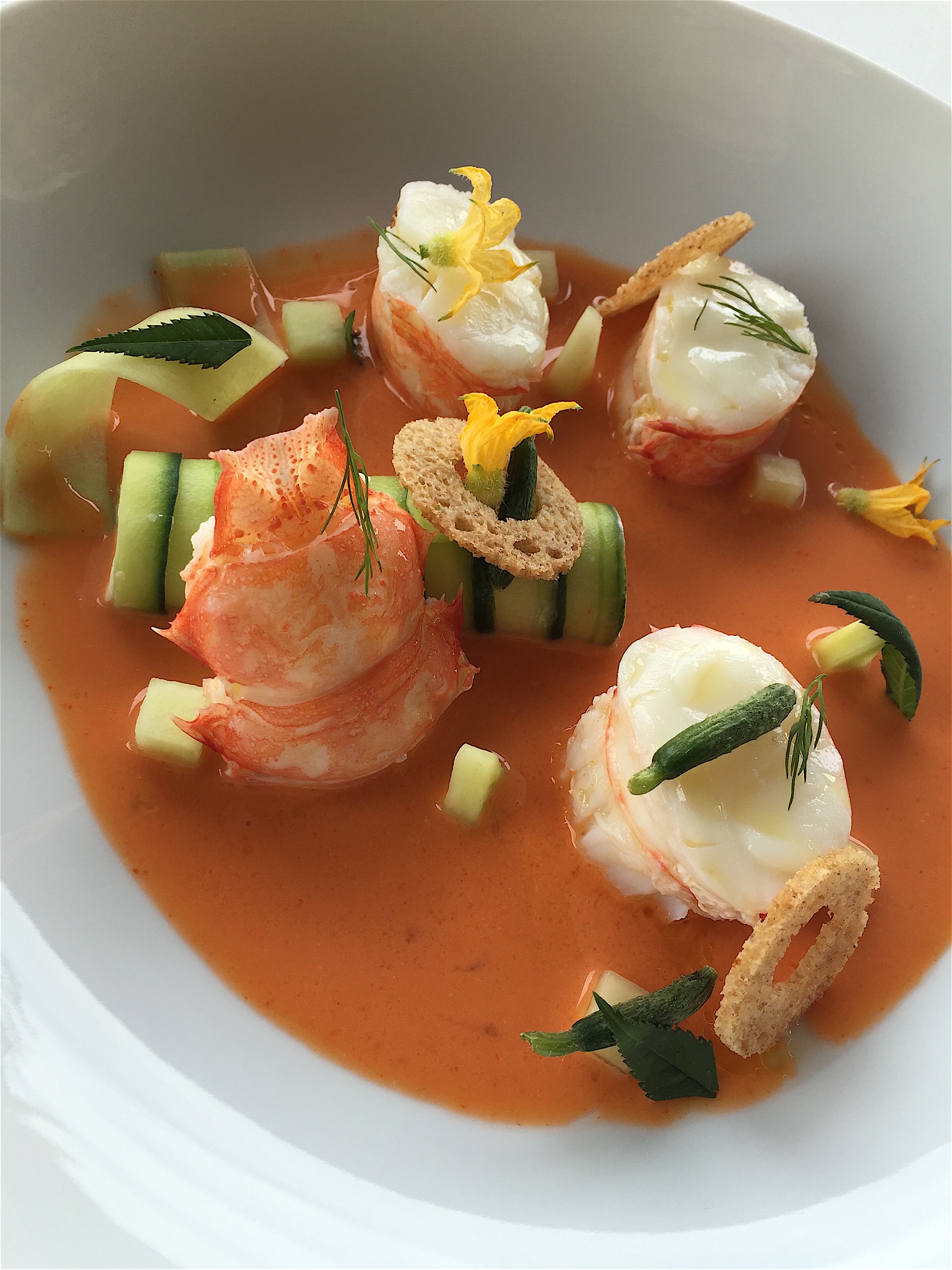
Langouste, soupe froide, cucumber
So leaving the visual possibility of an alarming overly ambitious facelift happily to one side, the kitchen had to be the place for any serious relaunch of this legend, and happily, that’s exactly where it’s happened. But first, for anyone who prefers a short-take, here it is: Now run by Andre Terrail, son of Claude, the Tour d’Argent has a brilliant new chef who has made the restaurant a serious gastronomic contender in Paris again.
With the arrival of the superbly talented Philippe Labbé, it looks like this grande dame of Gallic gastronomy has finally been granted a deeply delicious new lease on life. This means it’s a place you not only can go to again but one you should prioritize if you want an impeccably cooked meal of exquisite classical French cooking in a romantic setting with magnificent views.
I knew nothing about this, of course, when I somewhat ruefully headed here for lunch the other day, having received an invitation from Penelope, aka “Penny,” a second cousin from Philadelphia whom I hadn’t seen in at least a good twenty, maybe twenty-five, years. This is why my first response to her note—the invitation came on a heavy cream-colored monogrammed notecard, was a phone call to try to delicately suggest that maybe we might eat at another classic Parisian table of her choice, one where the food was likely to be better. But she stuck to her guns, saying she wanted to see the view again after so many years, and that she was sure the food would be “just fine.”
Arriving a little early, I lingered on the banks of the Seine across the street from the restaurant, and peering down at the dark moss green waters of the river, I hoped she’d be right and recalled the first time I ever ate there, which was also a good twenty years ago when I was writing a restaurant column in English for the pages that Time Out, the London arts-and-listings magazine, then published in the back of Pariscope. It was an incompatible marriage because the Paris weekly never quite achieved the quality level of the ten-page supplement the British publication edited. To wit, Time Out prided itself on a certain critical acuity and occasionally biting wit, while Pariscope never dared bite any hand that might feed it.
In any event, I had suggested to the editor of Time Out Paris that we might do an eating guide to Paris that reprised my weekly columns and add other new material, and so we did, with the help of many other talented local English-speaking reviewers, including the lovely Rosa Jackson, who eventually became editor of the guide and who now runs a superb cooking school, Les Petits Farcis, in Nice.
In the context of the severely straightened circumstances of editorial budgets in 2016, it now seems astonishing, but Time Out actually paid for every meal that was reviewed in its pages. They were good for a median priced meal for two, plus the cheapest bottle of wine on the menu, with any other extras being at the charge of the reviewer. Since La Tour d’Argent was a big fish, I asked Lemisse, one of the other editors on the guide, if she wanted to join me, and so we met in a café nearby for a Dutch courage glass of wine before we rather improbably cast ourselves into a tableau of la vie en rose that neither of us could have otherwise afforded short of escort work, winning the lottery or an inheritance.
Stepping through the doors, we found we’d unwittingly entered a steeplechase of courtesies that brought us to our table exhausted by the exertions of graciously acknowledging a good dozen or more ‘Bonsoirs’ of varying degrees of warmth and sincerity. Miraculously, though, we had a window table. To be sure it was at the far end of the dog’s leg dining room, and so with a partial view, but it was a window table nonetheless.
When our solemn waiter arrived with menus, he paused first and slowly eyeballed us. His verdict expressed by raised eyebrows and his nose wrinkled into a clenched pink knot like a rabbit was so gloriously theatrical that we had trouble not immediately dissolving into gales of laughter. Because this was exactly what we’d expected. To wit, we’d signed up for that most bizarre of gastronomic coinages, the gourmet meal that was meant to be politely and humbly endured rather than enjoyed.
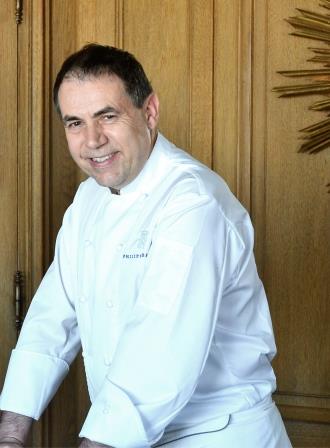
Chef Philippe Labbé
So we were studying the menu with no small degree of financial trepidation, when someone delivered a testosterone riddled boom of a tableside greeting, “Bonsoir, Madame, Bonsoir, Monsieur!”
We looked up. A handsome older man with steel gray hair was half bowed tableside, and neither of us had a clue as to who he was or what response was expected from us. “Bonsoir,” I finally mumbled back.
“Is this the first time you’ve dined at La Tour d’Argent?” the man inquired. We nodded. “Is it a honeymoon?” We vigorously shook our heads. “I see…” He stroked his chin. “May I advise you then?”
“If you’d like,” I said noncommittally, since I was seeking to head off a serious wound to my wallet with my rent due just three days later. And then, when I noticed the bachelor’s button in his lapel, I realized with a blood-chilled chagrin that I’d been speaking to none other than Claude Terrail himself.
We ended up with starters of scallops with truffle shavings and artichoke stuffed with crabmeat—nice food, if not memorable, and then we tucked into the Canard de l’An 2000 (Duck of the year 2000), which entitled us to the numbered postcards that are the great souvenir of a meal here—every duck served is numbered, but otherwise disappointed. Instead of tableside service, we were served two juicy ducks breasts in red wine sauce and duck thighs with a vinegary salad on the side. All told, a pleasant if unremarkable meal with a sad and particularly penurious half-bottle of Chinon.
Treating ourselves to a needed night-cap after dinner, Lemisse and I agreed that neither of us would ever need to repeat that particularly experience again, and so this is where I’d left off with La Tour d’Argent. Occasionally, friends visiting Paris did go, however, and their post-prandial comments were generally middling to wilted, with the view usually being mentioned as the highlight of the experience.
And so finally I crossed the street and met my second cousin in the reception area of the restaurant. She was wearing a dress of pistachio-colored linen, a cameo and Victorian style red coral jewelry that I’m sure her mother had bought on a trip to Sorrento around 1880. The retired headmistress of a prestigious girl’s school on the Main Line, she still had an imposing aura about her despite the girlishness evoked by the coral- colored velvet Alice band that held her oat-colored hair back.
The waiters seemed to understand that this was a woman not to be trifled with either, and we were promptly escorted to a table with a spectacular full-on view over Paris that took my breath away. On an intermittently overcast day, the city was heart-breakingly beautiful in its summer-stunned majesty, with the gardens behind Notre Dame sticking into the Seine like a green trident and sea gulls mixing with pigeons against a backdrop of pewter gray roofs punctuated by notable domes and spires.
When the great surprise of Philippe Labbé’s arrival was unveiled while we were having a glass of Champagne, the day suddenly became infinitely festive. Oh, I knew my second cousin, a classicist, would bring up the fact that I had been a terrible Latin student in high school and also ask me why I wasn’t married, but I wasn’t going to let these arrows dim my pleasure in a good meal. And with the passage of time, it occurred to me that however well-aimed her remarks might be, their effect was now more likely to be briefly startling, like pricking your finger on a needle, than wounding, since I no longer sought after or much cared about her ‘good’ opinion of me.
“Isn’t this lovely,” she said when she started reading the menu. “Please throw all cares to the winds, Alec. It’s my treat, of course, and another old relative popped off recently and left me some loot, so let’s spend some of it, shall we?” Emboldened, I ordered the Breton langouste (145 Euros) as my starter, and the beautiful copper-and-calico-colored crustacean was brought to the table live for my inspection before reappearing in an enthereal puddle of cool pink bisque seasoned with lemon verbena. The langouste (rock lobster) had been shelled, and its tender meat road small buoys of cucumber, a beautiful contrast of textures between the crunchy vegetable and the sweet flesh of the lobster.
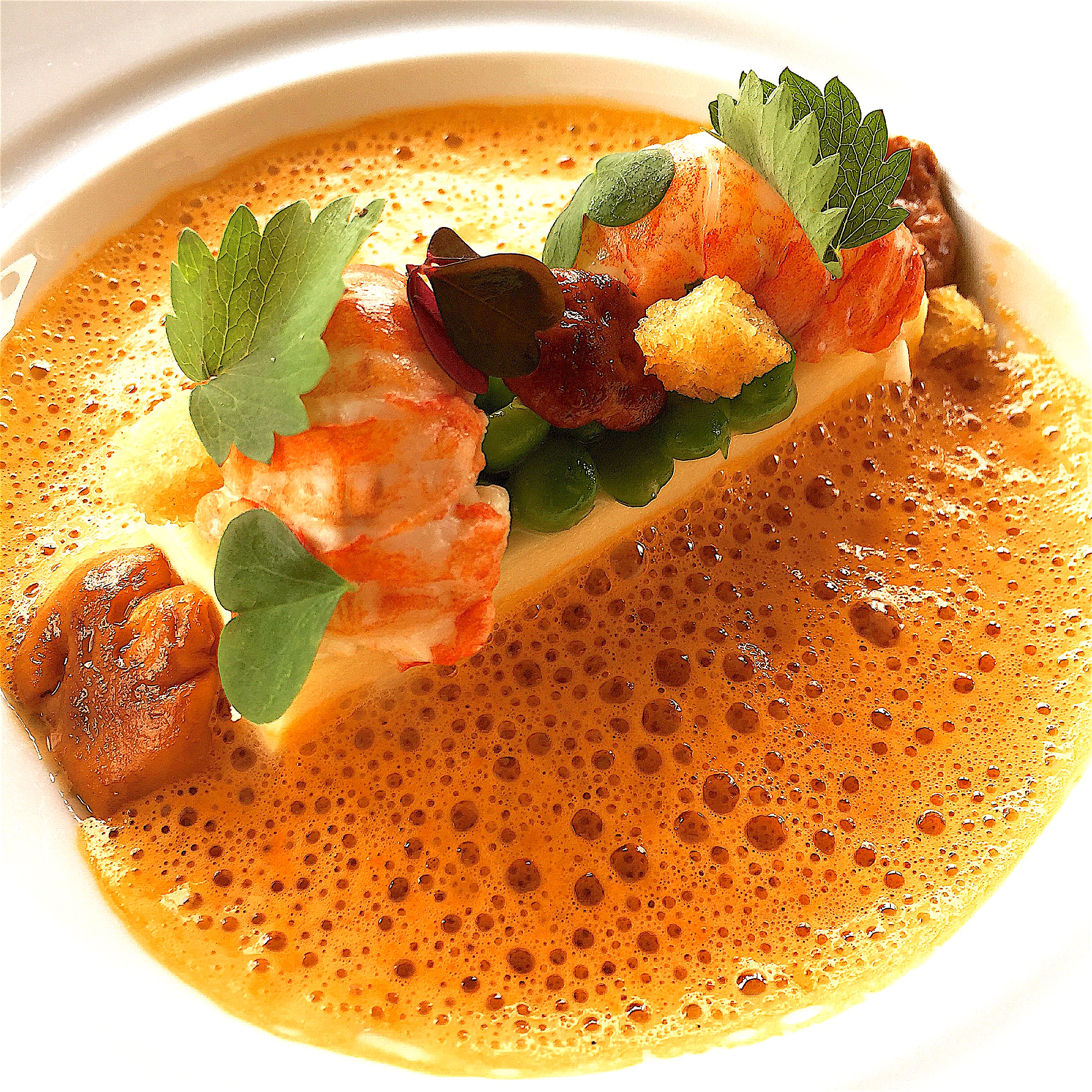
Quenelles de brochet
I was so engrossed in the elegance of this dish, so lost in my own selfish trance of pleasure, that I was surprised to hear someone speaking to me, my cousin. “Would you like to taste this?” she asked, and of course, I did, since she’d ordered a “Quenelle du 21eme Siècle” as part of her lunch menu. Looking as my second cousin’s leonine profile as she sipped her Chassagne Montrachet, it fleetingly occurred to me that she could be a lesbian, but then again, she had been married to the late Oliver, a nice soft-spoken book editor at a now equally defunct Philadelphia publishing house (all of publishing is now extinct in Philadelphia, to my knowledge, and this is a shame, since these small houses often took chances on books that were judged too unlikely to be financially successful by the New York editors).
The pillowy quenelle, a pike-perch dumpling native to Lyon and environs and one of my favorite classical French dishes, was simply brilliant in an impeccably deconstructed sauce Nantua (crayfish sauce) that was a richly flavored as it was astonishing light. Ornamented by a little ring of tiny girolles mushrooms, baby peas, and fragile leaves of salad burnet and woodruff, the quenelle was very beautiful, too. I guessed that it was these vegetal garnishes, and perhaps a tiny dose of vanilla added to the sauce Nantua, that made the dish 21st century, since it was otherwise a flawless homage to Escoffier. And yet it was also very subtlely modern, since Labbé has an extraordinary talent for calibrating infinitesimal tweaks to a dish that move it almost imperceptibly off-center and make it his own.
As we ate there was family chatter between us, including a reminiscence by Penny about a Thanksgiving dinner at my paternal grandmother’s during which another cousin suddenly decided to breast feed her baby at the table. I was just on the verge of adolescence at the time, but it struck me as a perfectly normal thing to do and also sort of fascinated me to see the baby going at the distended nipple so greedily. For almost everyone else, though, it was a high distasteful lapse of good manners. And then there was another cousin who came with his Bolivian girl friend—he’d been in the Peace Corps there, who had long thick black braids and wore a black bowler hat to lunch and cracked and sucked on the bone of her drumstick.
We laughed over these memories, but I couldn’t quite place Penny’s sympathies during their recitation.
What I left unsaid, however, was that my main interest in going to that particular meal was the thrill of blowing on the embers of the hopeless crush I had on another second cousin, the smolderingly handsome Bart, who had unwittingly won my ten year old heart the summer before when he looked after me and my brother at a Long Island beach club.
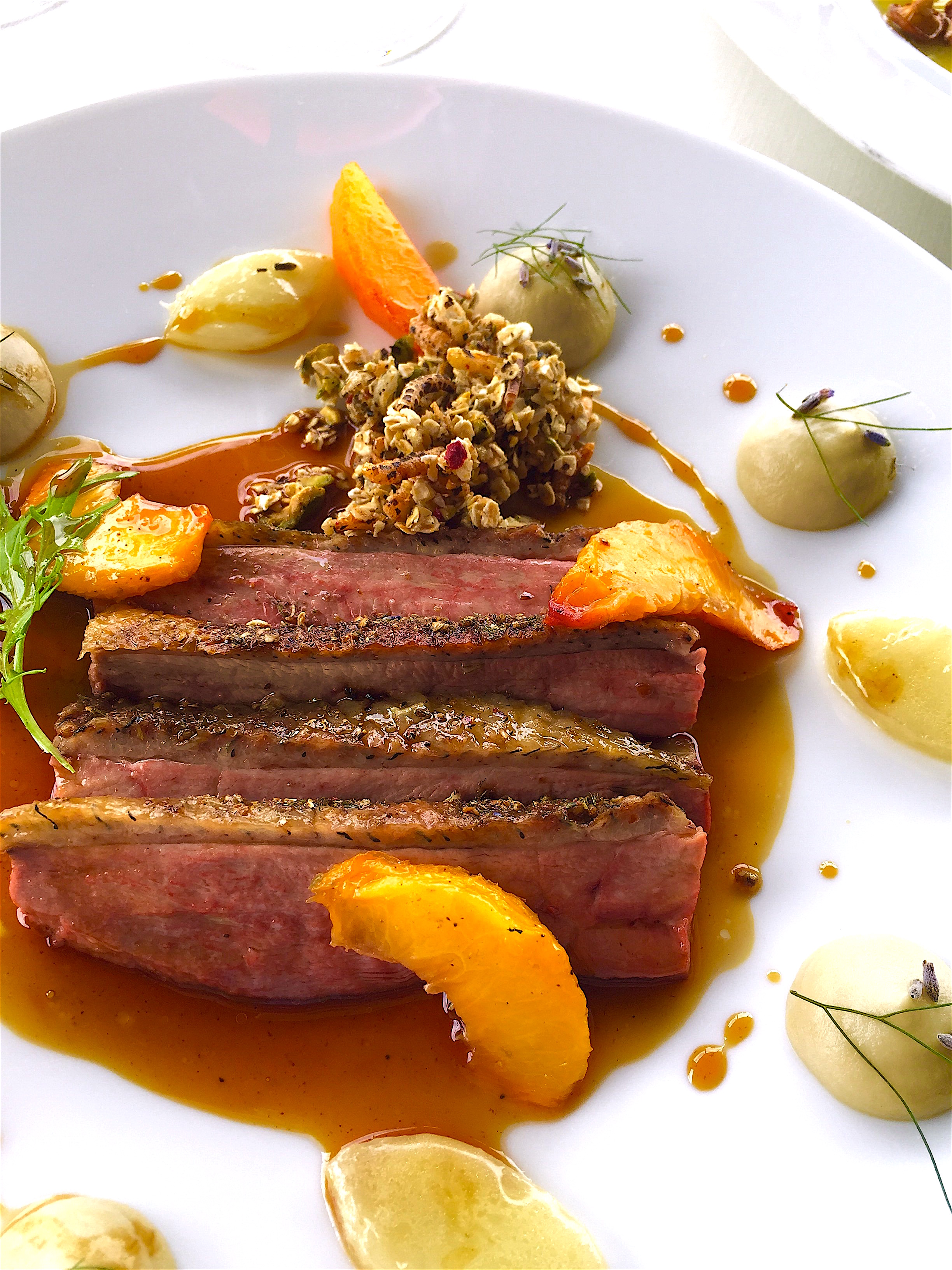
My honey-roasted Challans duckling breast was served in a sauce of vinegar-spiked pan juices with candied peaches, fresh almonds and a side of Szechuan pepper laced muesli. Now, this was one very sexy dish, and a sly one, too, since Labbé had had his own way with the restaurant’s traditional fowl. Juicy, flavorful, and a perfectly toothsome balance between chewy and tender, this bird struck me as Labbe’s own edible version of La Marianne, that kitschy female incarnation of France that appears in bust forms in government buildings.
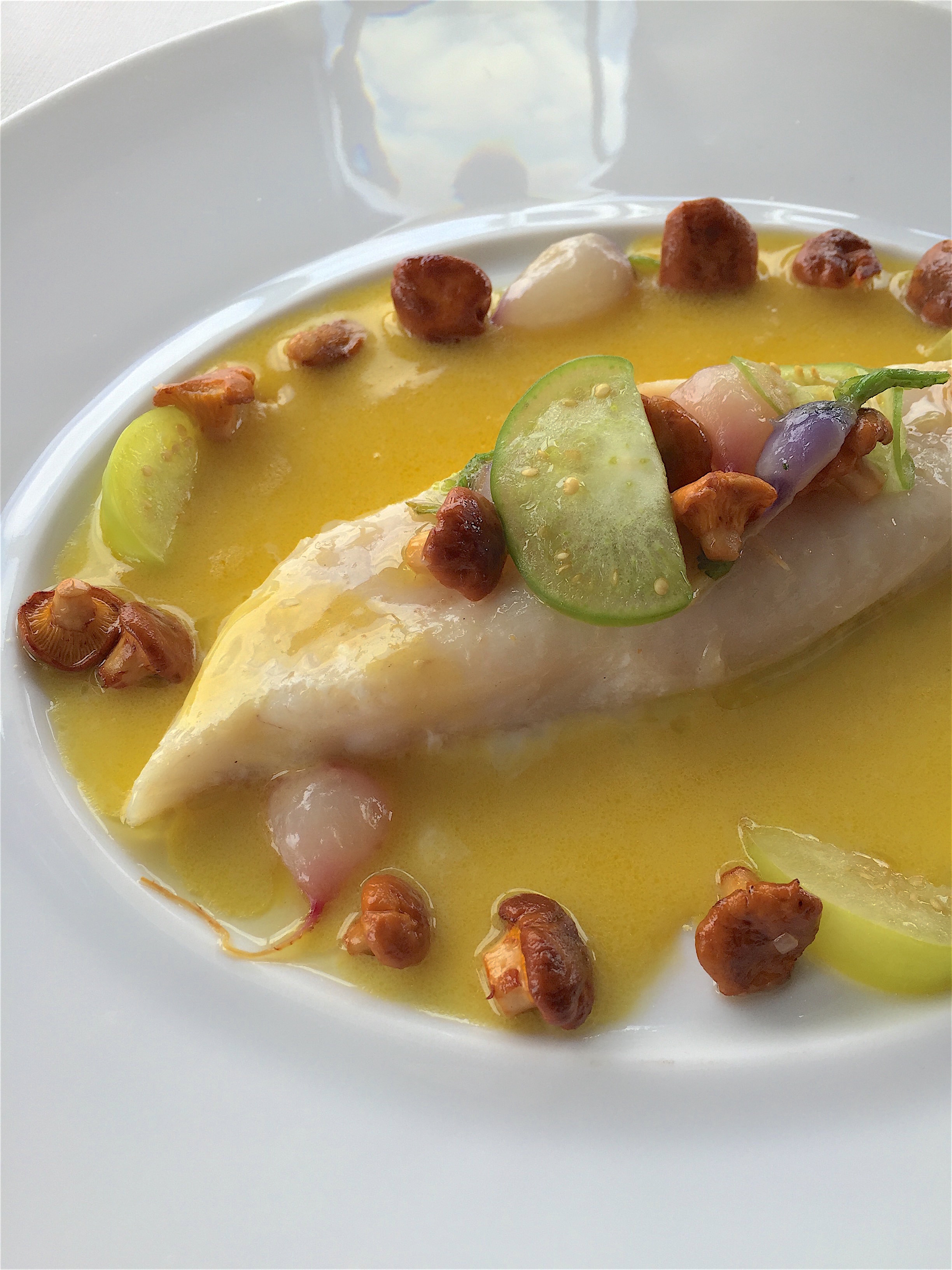
Meanwhile, across the table, Penny was apparently very happy with her John Dory filet in an acidulated sauce seasoned with lemongrass and ginger with garnishes of girolles, radishes, and tomatillos, the first I’ve ever seen in France. We exchanged a smile or two while were ate, but were otherwise quiet like some companionable long-married couple. Or so I thought.
When our plates were removed, she cleared her throat. “Alec, you know I’ve always been rather jealous of you.” I think she enjoyed my look of surprise. “I mean the reckless, selfish throw all cares to the winds way that you moved to New York City after college, studiously avoided all of the ‘nice’ young people your Aunt wanted you to befriend, and threw yourself into, as I’ve been made to understand, a whirlwind of nightlife and sex and illicit substances.”
I said nothing.
“Well, I just wish I’d had the courage to do the same thing. I wish I’d gone to Studio 54 and dated famous dancers and, well, all of that. I mean, it must have been so much fun.”
“It was. But then so is this lunch. Life changes, and new pleasures come along to replace the old ones,” I said.
“Yes, but I’m sorry I didn’t know any of those old ones,” Penny replied.
When waiter interrupted us to take our dessert order, I caught the gaze of the heavily rouged, kohl-eyed older woman with a necklace of apricot-sized amber beads and a silver-headed cane at the table next to ours, and she winked. Ah, so we had an audience, and suddenly the previously matronly looking dining room with its royal blue carpet with a bronze flourish patter, mirrored ceiling, and royal blue velvet covered Louis XVI or something chairs revealed a side of itself as a setting that might have tantalized the late photographer Helmut Newton. I ordered caramelized white peaches with lime sorbet and lemon-verbena yogurt. Penny chose strawberries marinated in wine with black olive puree and sugared scrambled eggs with pistachios, a fascinating entremet.
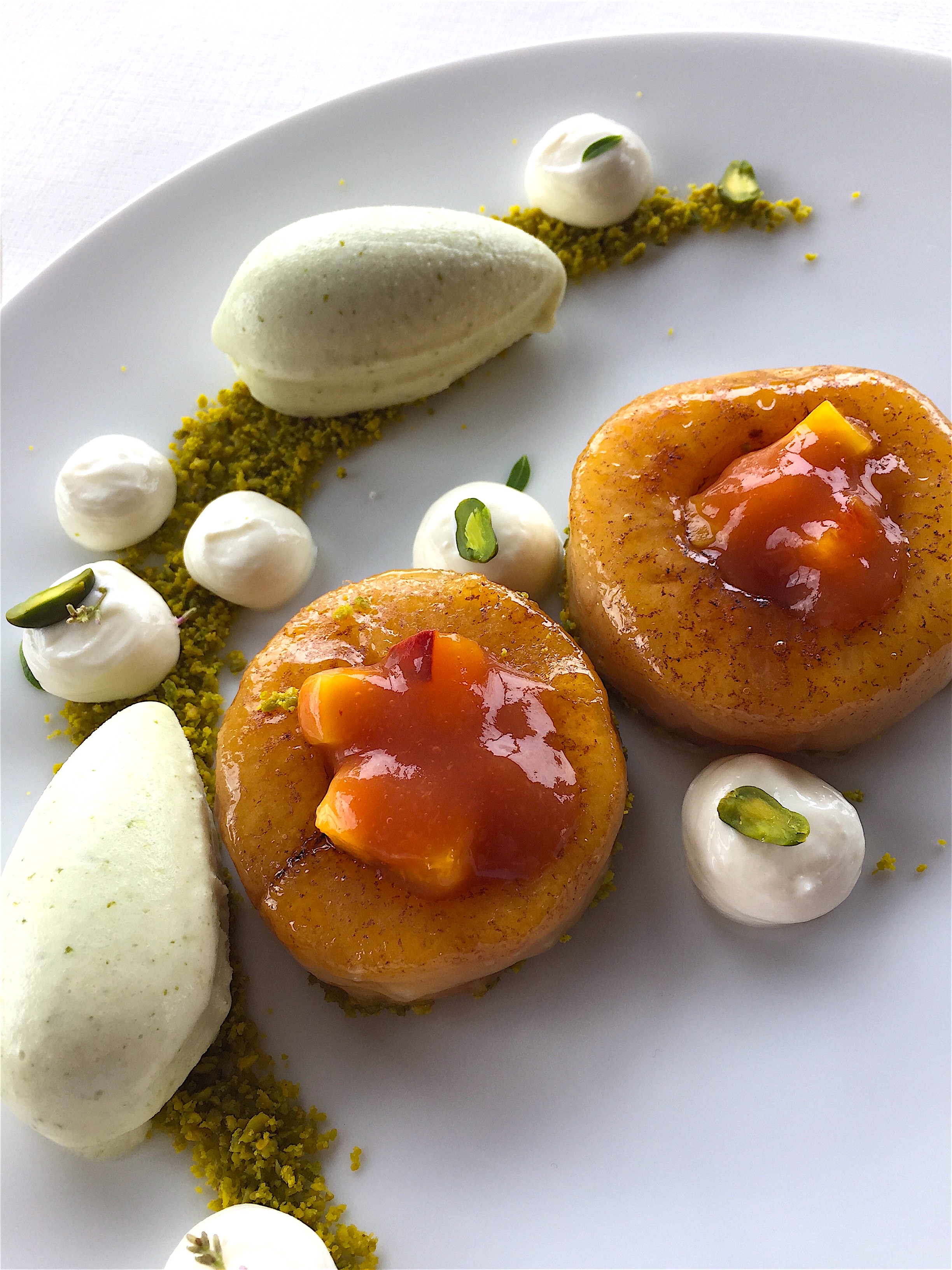
We smiled at each other when our desserts were served, but after a single strawberry, Penny put her spoon down.
“Did you know that I did a junior year abroad in England?”
“I didn’t.”
“Yes, in London, where I studied ancient languages and Victorian literature.” She looked out the window, and I respected her long pause.
“I went away for a weekend once with one of my professors, to Brighton we went, me and Charlotte, and we had a lovely time. I often wonder how different my life might be today if I’d stayed. I was in love, but, well, I just couldn’t see how it could work out. Or rather, perhaps I just didn’t have the courage to make it work, so I went home and married Oliver.”
I put my hand on top of hers on the table. So this was why she’d wanted, or rather needed, to see me so badly.
“Mais Cherie! Vous etes toujours tres belle! C’est jamais trop tard!” called our neighbor, and Penny started laughing so hard she had to blot up tears with her napkin. Then the lady excused herself with a chuckle and a little wave and slowly made her way across the dining room.
A minute later the waiter reappeared and poured us some very good Champagne, explaining that it was a gift from ‘Madame.”
Like Philippe Labbé’s superb cooking at La Tour d’Argent, perhaps a life well-lived then is all about the appreciating the seasons, celebrating subtlety and getting the details right in the end. I hope I don’t have to wait another twenty years before I return to this wonderful restaurant.
15 Quai de la Tournelle, 5th Arrondissement, Paris, Tel. (33) 01-43-54-23-31, Metro: Maubert-Mutualite or Sully-Morland. Open Tuesday to Saturday for lunch and dinner. Closed Sunday and Monday. www.tourdargent.com Average a la carte 250 Euros, prix-fixe menus 210 Euros, 220 Euros, 350 Euros; Lunch menu 105 Euros.




